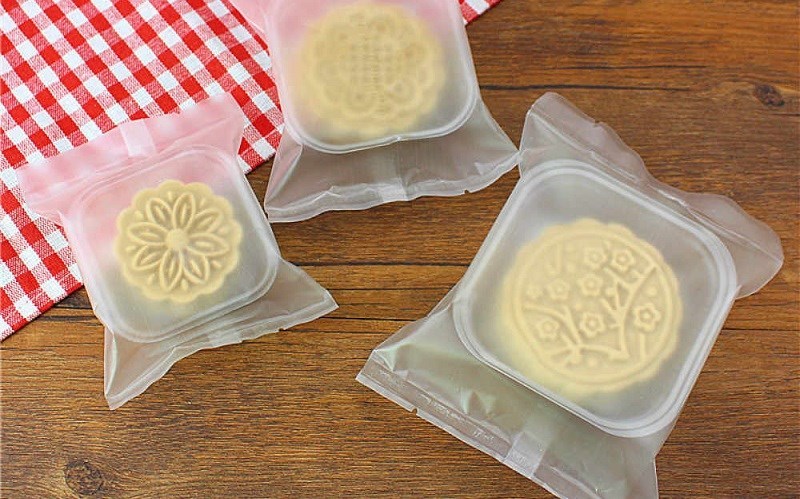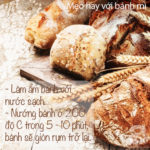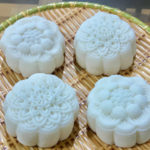1 Cracked and hard crust
Symptom: The crust of the cake remains hard and cracked even after baking for a day.
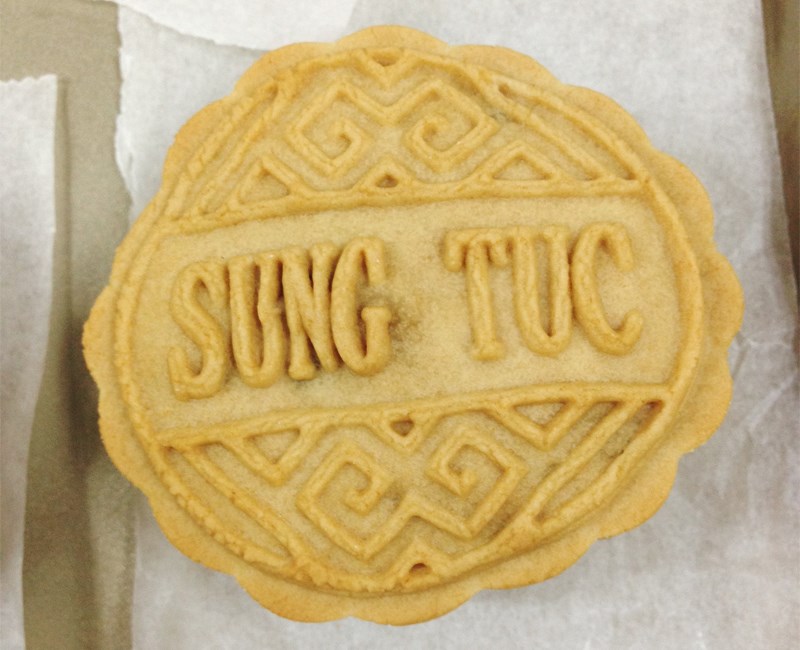
Cause
- Overbaked or baked at too high temperature;
- The sugar syrup used in baking is too thick;
- Poor selection of flour;
- The crust is made too thick;
- If the cake is filled with bean paste, the filling lacks oil, causing it to be dry and not moistening the crust, resulting in a hard cake.
Remedies
Depending on the size of the cake, choose the appropriate baking temperature, usually ranging from 190 – 200 degrees Celsius. If your oven temperature is too high, you can use foil to cover the top of the cake.
Check the sugar syrup to see if it is too thick by adding it to a small bowl of water. If the sugar syrup forms lumps and does not dissolve, it means it is too thick. You need to make a new batch of sugar syrup before baking.
When choosing flour, it is preferable to use all-purpose flour. Avoid using high-gluten flour, as it will make the cake hard and dry.
If the filling is bean paste, check if it has enough oil. The bean paste should be smooth, soft, and not dry.
Wrap the cake and filling with a ratio of 2:1. The crust should be thin, about 0.4 – 0.6 cm, to avoid having to bake the cake multiple times due to a thick crust that makes the cake hard.
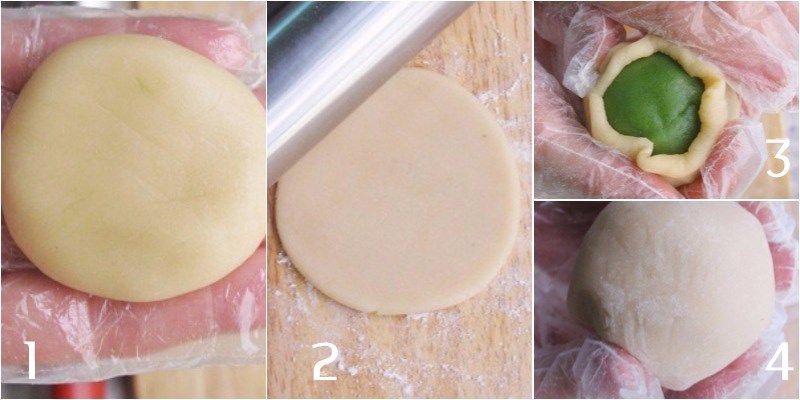
2 Wet crust
Symptom: The cake becomes wet and sticky on the outside after 1-2 days.

Cause
- The sugar syrup used in baking is not at the right consistency or has been used too quickly;
- Too much water sprayed during baking;
- Too much sugar syrup used in the glazing;
- Choosing flour with number 8 for the crust;
- When filling with bean paste, the filling does not have enough oil, causing it to be dry and not sticking to the crust.
Remedies
Allow the sugar syrup to mature for 1-2 weeks before using it for baking. If you don’t have much time, you can buy ready-made sugar syrup.
Limit excessive water spraying during baking. Reduce or use very little sugar syrup for glazing.
Choose all-purpose flour instead of high-gluten flour for the crust.
If the filling is bean paste, check if it has enough oil. The bean paste should be soft, smooth, and not dry.
Wrap the crust and filling with a ratio of 2:1. The crust should be thin, about 0.4 – 0.6 cm, to ensure that the cake does not need to be baked multiple times due to a thick crust that makes the cake hard.
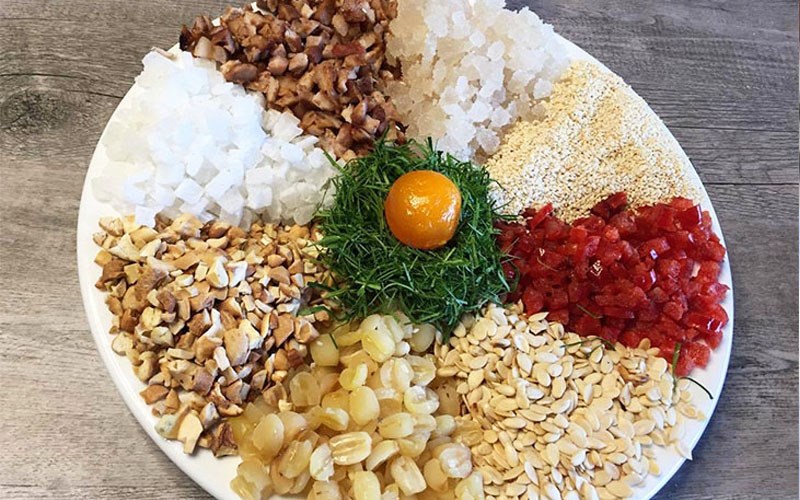
3 Cracked crust
Symptom: The cake has cracks on the surface or body of the cake.

Cause
- Kneading the dough too hard;
- Applying a thick layer of egg wash, or not applying it evenly;
- Too high baking temperature.
Remedies
Knead the dough according to the recipe, ensuring that it is soft, smooth, and not dry.
When applying the egg wash, apply a thin layer and wait for the cake surface to dry before applying another layer.
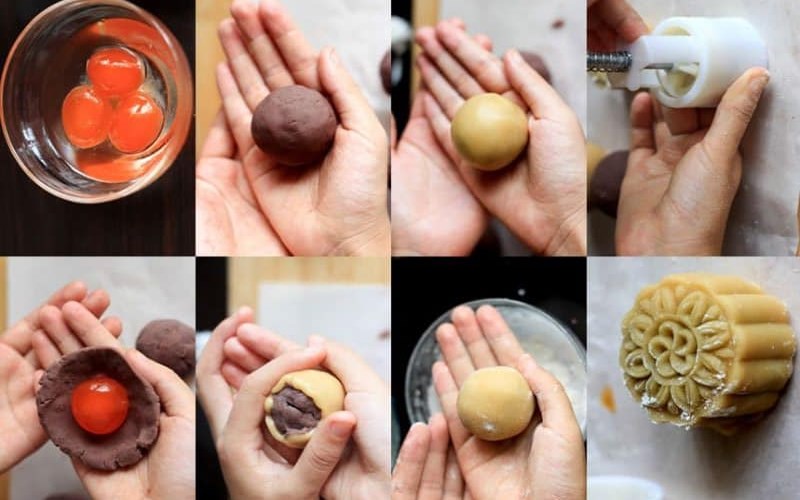
4 Filling separates from the crust
Symptom: After baking, the filling becomes loose and does not adhere tightly to the crust.
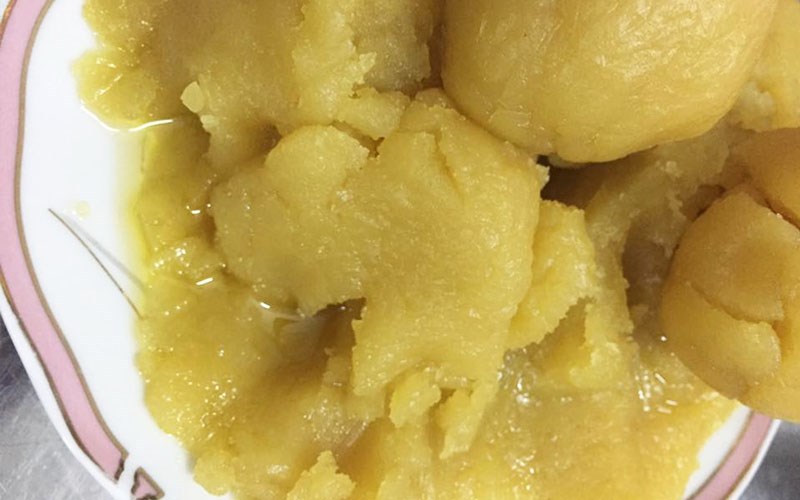
Cause
- Inconsistent shaping of the cake dough;
- The crust does not adhere tightly to the filling, causing air pockets and preventing the filling from sticking to the crust;
- The filling is too dry and not enough to moisten the crust;
Remedies
Ensure that the filling is soft, smooth, and not dry.
When shaping the cake, press it tightly and evenly, removing any excess air between the filling and crust.

5 Loose and crumbly filling
Symptom: The mixed filling ingredients fall apart and do not stick together.

Cause
- Cutting the ingredients too large;
- Not adding enough moisture to the filling mixture.
Remedies
When making a mixed filling, cut the ingredients into small, even pieces (0.2 – 0.3 cm). However, do not grind them too finely.
When mixing the filling, you can add a little sugar syrup and glutinous rice flour to make the filling stick together better. Adjust the amount according to the recipe.

6 Greasy bean filling
Symptom: The bean filling becomes greasy.

Cause
- Adding too much oil to the filling;
- Heating the filling mixture at too high temperature and adding oil at the same time;
- Adding too little water when grinding the beans;
- Adding oil to the filling too late;
- Adding oil to the filling all at once, causing the filling to separate.
Remedies
Measure the appropriate amount of oil in the recipe.
Heat the filling mixture over medium-low heat, and when heating, divide the oil into 2-3 portions, adding it gradually. Heat the filling mixture first, then add the oil slowly in stages.
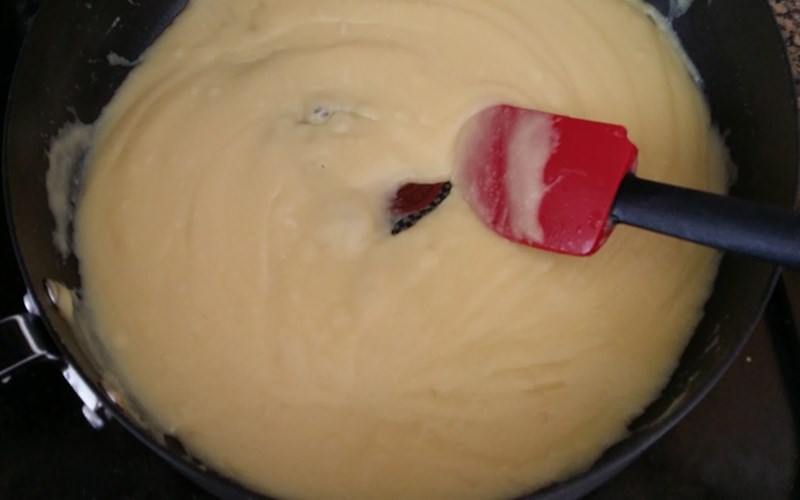
7 Cake expands during baking
Symptom: The cake rises and expands during baking. The cake becomes deformed after baking.

Cause
- The filling is not properly prepared, and it is still wet;
- Baking the cake at too high temperature;
- Applying a thick layer of egg wash before baking.
Remedies
Prepare the filling according to the recipe, ensuring that it is soft, smooth, and not wet.
Bake the cake at the appropriate temperature. You can use foil to cover the top of the cake.
Before baking, apply a thin layer of egg wash, as a thick layer is not necessary.
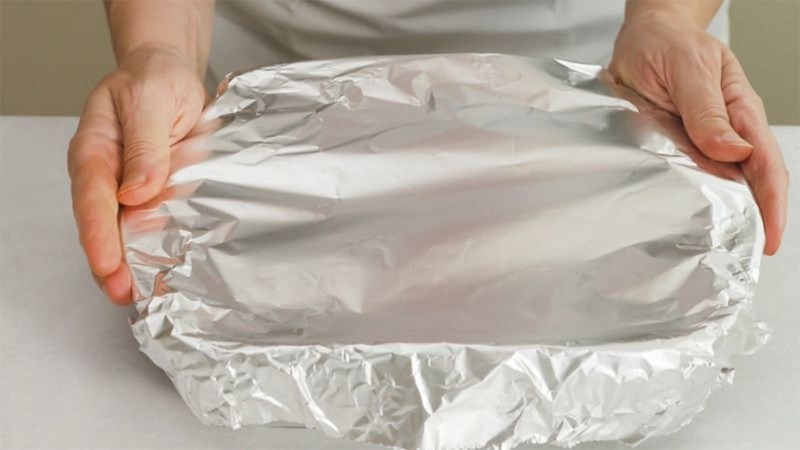
8 Cake with an uneven color
Symptom: The cake has a pale and unappetizing color.

Cause
- The cake is not baked for the required time;
- Using fresh sugar syrup for baking;
Remedies
Bake the cake for the required time, and you can mix oil, milk, egg yolks, or a little sugar syrup to apply on the cake surface to achieve a beautiful brown color.
Use sugar syrup that has been matured for 1-2 weeks before making the cake, instead of making fresh sugar syrup.
For green tea cake, if you want to maintain the fresh green color, you can cover the cake with foil during baking.

9 Hard or sticky cake
Symptom: The cake crust is hard and difficult to swallow or sticky and wet.
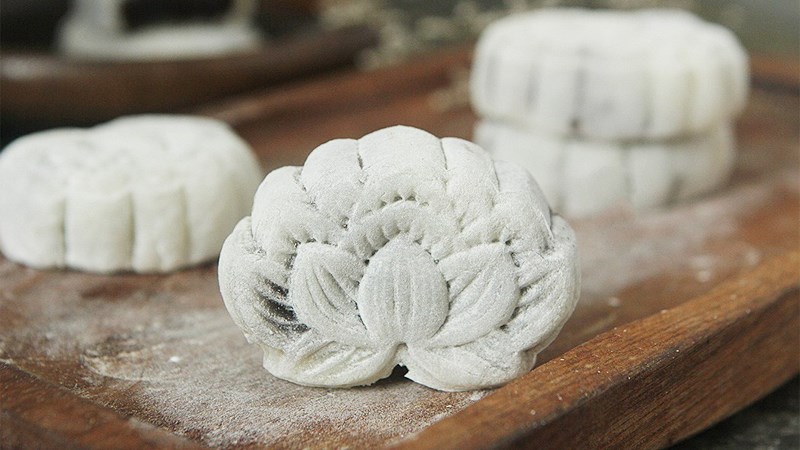
Cause
- Improperly mixed dough;
- Too much or too little oil used in mixing the dough.
Remedies
Measure the appropriate amount of liquid ingredients in the recipe and avoid adding or reducing the amount of oil, flour, etc.
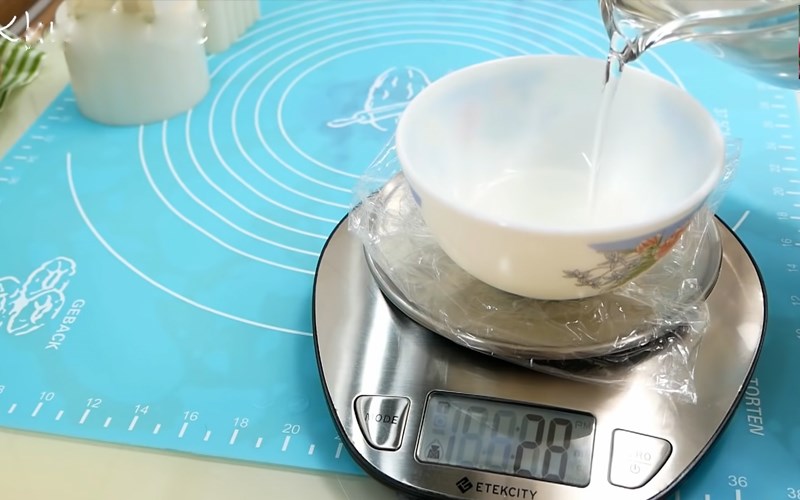
10 Cake becomes sour, stale, or moldy quickly
Symptom: The cake becomes sour, stale, or molds appear on the cake after 1-2 days.
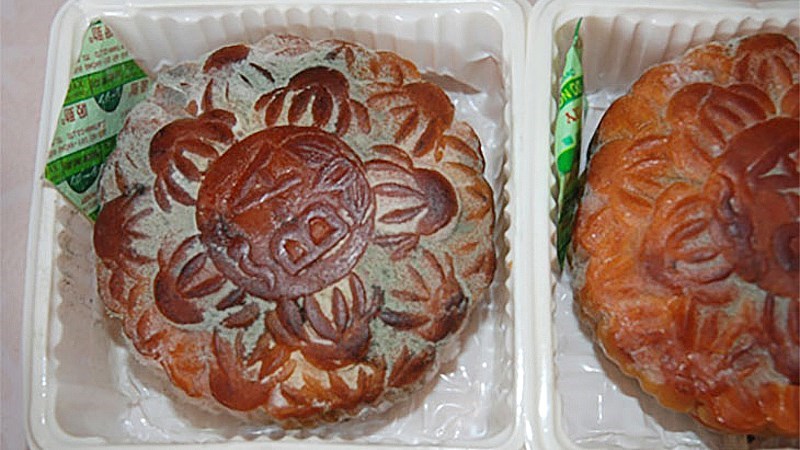
Cause
- The ingredients used may not be fresh;
- The amount of sugar used in the cake is too little;
- The cake is wet and not well-ventilated when stored in a plastic bag;
- Poor cake storage.
Remedies
Select the freshest and best-quality ingredients for making the cake.
Use the right amount of sugar in the recipe. If you don’t like it too sweet, you can reduce the amount, but not too much. Store the cake in a cool place, avoid direct sunlight for an extended period. It is better to wrap the cake in airtight packaging and include moisture absorbers.
Ensure proper storage conditions for the mooncake.
